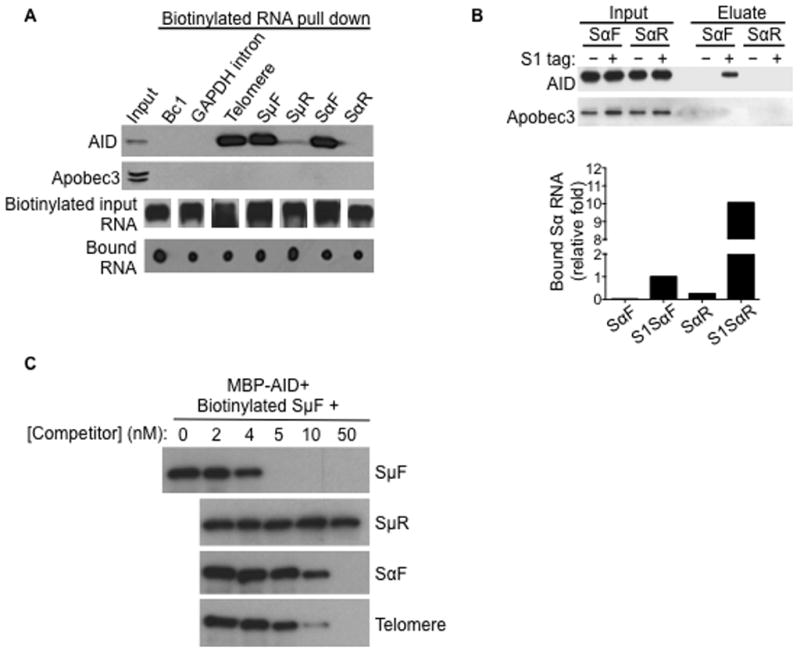Figure 1. Switch RNA can bind AID.

(A) In vitro transcribed (IVT) telomeric and switch RNAs bind to AID. IVT biotinylated RNAs were folded and incubated with whole cell extracts from stimulated CH12 cells, followed by pull-down with streptavidin beads. Proteins recovered were analyzed by immunoblot with AID or Apobec3 antibodies; while bound RNAs were analyzed by dot blot using streptavidin-HRP. Input RNAs were verified to be biotinylated by streptavidin-HRP-northern blot. SμF, SαF; forward/sense switch μ and α RNA. SμR, SαR; reverse/anti-sense switch μ and α RNA. Result shown is representative of three independent pull-down experiments.
(B) Switch RNA interacts with AID in vivo. CH12 cells stably expressing S1-aptamer tagged Sα transcripts, in either the forward/sense (S1SαF) or the reverse/anti-sense (S1SαR) orientation, were stimulated. Untagged SαF and SαR expressing cells were used as controls. The S1-aptamer tag has affinity for streptavidin and ribonucleoprotein complexes were isolated on streptavidin beads. RNA in the eluates was reverse transcribed and analyzed by qPCR (RT-qPCR) for amounts of Sα transcripts relative to S1SαF, while proteins in the eluates were analyzed by immunoblot. Result shown is representative of three independent pull-down experiments.
(C) Competition RNA binding assay. RNA pull-down was performed with 1 nM biotinylated SμF RNA and 100 ng MBP-AID(WT) protein, in the presence of increasing concentrations of non-biotinylated competitor RNAs. Bound MBP-AID(WT) recovered by pull-down with streptavidin beads were analyzed by immunoblot with an AID antibody. Data shown is representative of three experiments.
